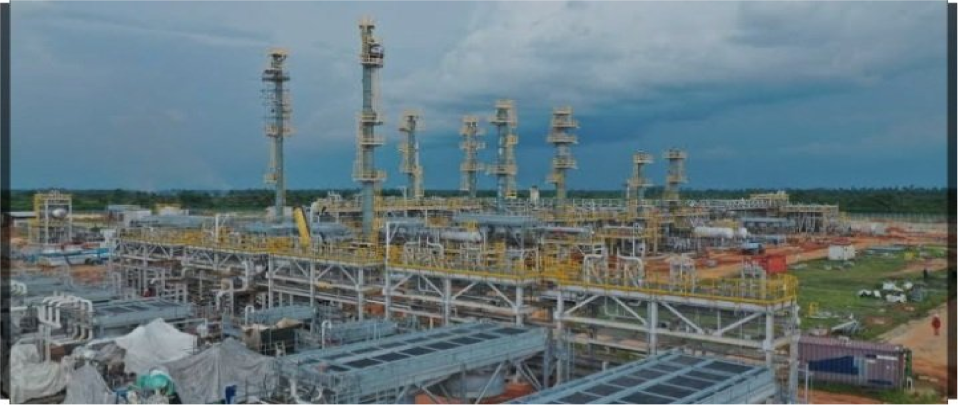Maybe for the records...
By Chimazuru Nnadi-Oforgu
Recently, a narrative has gained traction suggesting that the South-East is not excluded from Nigeria’s gas infrastructure, citing the massive Seplat and Shell gas projects in Imo State. While this assertion may seem convincing on the surface, a closer examination exposes a more complex, and troubling, truth: the South-East continues to be structurally excluded from Nigeria’s gas distribution and railway infrastructure, despite hosting critical natural resources.
This article sets the record straight with facts, context, and counterpoints.
ANOH Gas Projects in Imo: Extraction, Not Inclusion
Let’s begin with what is true. The Seplat and Shell Joint Venture projects in Assa North, Ohaji, Imo State, are indeed monumental in size and scope:
$4.2 billion combined investment
900 million standard cubic feet/day (MMscfd) capacity
Equivalent to 6.3 million tonnes per annum (MTPA)
Reserves of 4.3 trillion cubic feet (Tcf) and 215 million barrels of condensate
But here’s the inconvenient truth: these gas projects are not for the benefit of the South-East. They are midstream and upstream infrastructure meant to evacuate gas from the South-East to more “favored” regions like Ogun, Lagos, and the North via the national pipeline system.
In essence, gas is extracted from Imo and piped elsewhere. The local economy remains untouched by the scale of the wealth beneath its soil. This is a case of resource extraction without local beneficiation, a trend that has defined Nigeria’s relationship with the South-East for decades.
Nigeria’s National Gas Infrastructure: Where Is the South-East?
According to the Nigeria Gas Master Plan, the nation’s key gas pipelines include:
Escravos–Lagos Pipeline System (ELPS)
Obiafu–Obrikom–Oben (OB3) Pipeline
Ajaokuta–Kaduna–Kano (AKK) Pipeline
Now ask: which of these pipelines pass through the South-East geopolitical zone, Abia, Anambra, Ebonyi, Enugu, or even the gas-rich Imo?
None.
The South-East is not a beneficiary of the domestic gas distribution infrastructure. The gas from Imo is routed westward to feed industries in Ogun, Lagos, and North-Central Nigeria. There is no major gas pipeline project currently under construction or planned to deliver gas to South-East states for industrial consumption.
So yes, Imo is producing the gas, but not consuming it. It is a classic case of resource colonialism, not inclusion.
The Railway Question: A Silent but Stark Exclusion
Now let’s turn to rail infrastructure, the lifeblood of regional economic development.
Nigeria’s modern railway projects include:
Lagos–Ibadan–Kano (Standard gauge)
Warri–Itakpe–Abuja
Coastal Rail Project: Lagos–Benin–Warri–Port Harcourt–Calabar
Again, where is the South-East, Anambra, Enugu, Abia, Ebonyi, Imo, in all of these?
Nowhere.
The Eastern Narrow Gauge line (Port Harcourt–Enugu–Makurdi–Maiduguri) that used to connect the region has been in a state of disrepair for decades. Despite announcements about rehabilitation, the project is perpetually stalled. Meanwhile, no new standard gauge line is being developed through the South-East, even though the region lies between two major geopolitical and economic corridors.
How does a region of over 25 million people, with some of the highest literacy and industrial potential, get so thoroughly excluded?
Extraction ≠ Inclusion
The Seplat and Shell gas projects in Imo are not proof of South-East inclusion in Nigeria’s infrastructure plan. They are proof of a deeply exploitative dynamic where resources are taken from the South-East but not used to uplift it.
Gas infrastructure that does not distribute gas to local communities is not inclusion, it is extraction.
A railway system that bypasses five states of a region is not federal character, it is systemic exclusion.
We must therefore reject this false equivalence and demand more than token projects. Equity in infrastructure is not just about where resources are extracted, but about where they are used, who benefits, and whose future is being built.
Here is the corrected version of your sentence:
Our governors should understand this, unless, of course, their loyalty to and agreements with the powers that be, who guaranteed their installation as governors, forbid them from probing such glaring anomalies.
Until the South-East is meaningfully included in national pipeline and railway planning, the claim of inclusion remains an illusion.

